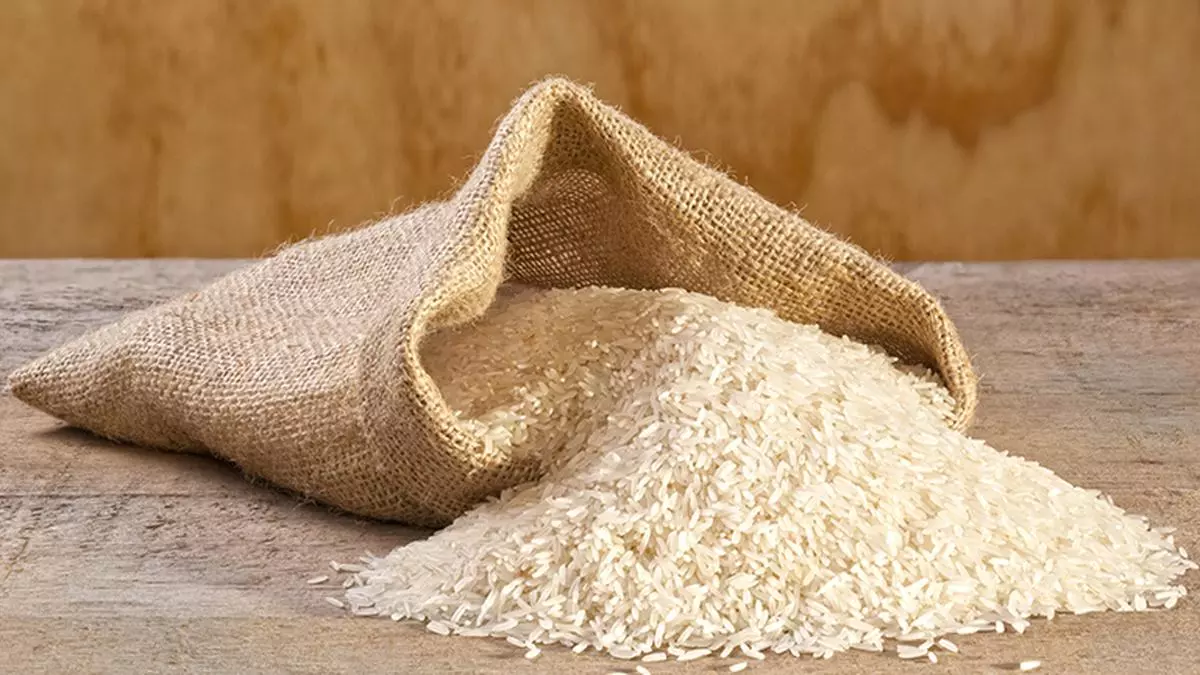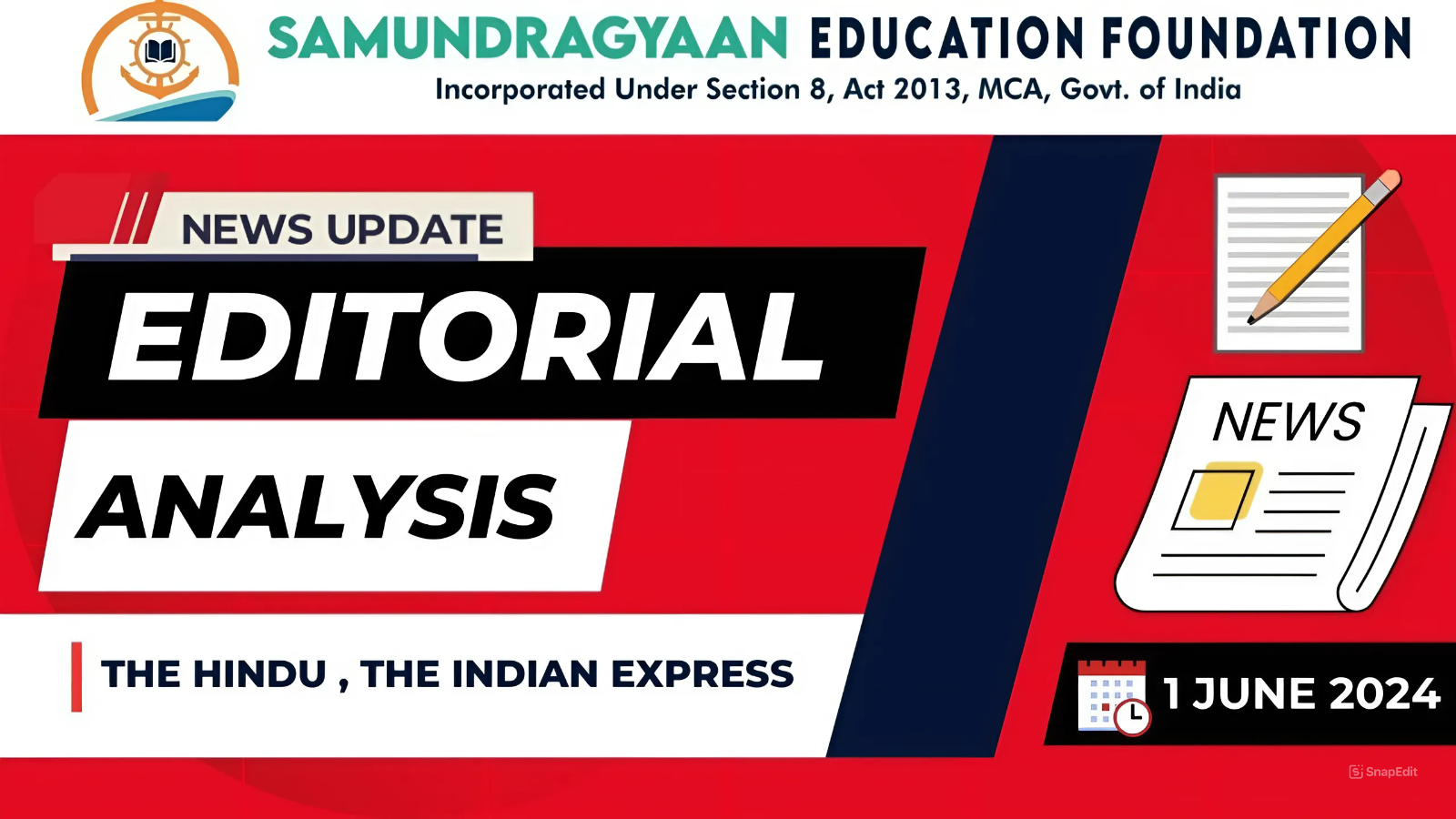Editorials & Articles : 1 June 2024
Why India Has Been Questioned at the WTO For Its Rice Export Policy

- Background and Context:
- Canada, Brazil, Australia, and the UK have raised concerns at the WTO regarding India’s rice export policy.
- They seek clarification on whether India prevented its rice exporters from participating in UN World Food Program (WFP) tenders earlier this year for broken rice supplies to countries like Cameroon, Togo, and Algeria.
- These countries question whether India’s actions contradict its commitment to exempt humanitarian food purchases from export restrictions, as agreed upon at the WTO.
- UN World Food Programme (WFP):
- Established in 1961, WFP is the largest humanitarian organization focused on hunger and food security.
- It aims to eradicate hunger globally through food assistance during emergencies and nutrition improvement initiatives.
- Relies on donations to fund its operations from governments, corporations, and individuals.
- India’s Rice Exports:
- India is the largest global rice exporter, holding a 45% share of the world rice market.
- Imposed a 20% export duty on white rice in September 2022, extended to parboiled rice in August 2023 to control domestic prices.
- The export ban exempts basmati rice, which accounts for nearly half of India’s rice exports.
- Since the ban, India has selectively exported rice to strategic partners and countries in need.
- World Food Programme’s Tenders for Rice:
- Many African nations heavily rely on rice imports from India.
- Togo imported 88% of its rice from India last year; Benin and Senegal also import significant amounts.
- WFP sought 200,000 tonnes of rice from India in August 2024 due to global food insecurity exacerbated by the COVID-19 pandemic and the Ukraine war.
- Countries’ Response to India’s Rice Ban:
- Countries at the WTO’s agriculture committee meeting noted a significant decline in India’s rice exports in 2023-24 due to restrictions.
- They argue that if India indeed barred participation in WFP tenders, it would violate WTO commitments exempting humanitarian food purchases from export restrictions.
- India has acknowledged the queries but has not provided immediate answers, stating it will respond soon.
This situation highlights international concerns regarding India’s rice export policies, especially concerning humanitarian aid through organizations like the WFP, and raises questions about compliance with WTO agreements.
ED arrests dark web drug vendor

- Recent Incident:
- The Enforcement Directorate (ED) has arrested a resident of Uttarakhand under the Prevention of Money Laundering Act for allegedly operating an international drug trafficking group.
- The accused utilized the dark web to distribute fentanyl and other dangerous drugs to regions including all 50 states of the USA, Canada, Europe, and the Caribbean.
- Dark Web Overview:
- Definition: A secretive part of the internet accessed via encrypted channels like Tor, known as the darknet.
- Operational Mechanics:
- Uses Tor (The Onion Router) for anonymity and protection against surveillance.
- Access requires specialized browsers like Tor, Freenet, I2P, or Tails, ensuring user anonymity by routing web requests through proxy servers.
- Comparison with Deep Web:
- Both are inaccessible via standard search engines.
- Deep web content requires specific URLs, whereas dark web content demands decryption keys and access rights.
- Uses and Misuses:
- Illegal Activities: Facilitates trade in contraband such as drugs, weapons, and illicit content due to anonymity and encrypted transactions, often involving cryptocurrencies.
- Ethical Uses: Supports privacy for legal activities like confidential business transactions, journalism, and activism.
- Law Enforcement Use: Utilized by authorities for threat intelligence, monitoring cyber threats, and identifying illegal activities.
- Legal Status in India:
- Accessing the dark web itself is legal, but illegal activities conducted through it (e.g., child pornography, drug trafficking) are punishable.
- Regulatory challenges stem from encryption, anonymity, and trans-border nature, complicating law enforcement efforts.
- Regulatory Challenges:
- Encryption and Anonymity: Difficulties in monitoring and regulating due to strong encryption and financial transactions in cryptocurrencies.
- Cross-border Issues: International cooperation needed to address transnational crimes facilitated by the dark web.
- Proposed Measures:
- VPN Regulation: Consider restrictions or registration requirements for VPNs to control dark web access.
- Technology Development: Invest in new encryption tools and foster public-private partnerships for cybersecurity.
- International Cooperation: Enhance multilateral exchanges to combat cross-border challenges.
- Policy Considerations: Debate on adopting measures akin to China’s Great Firewall to restrict Tor traffic and mitigate darknet crime.
This incident underscores ongoing challenges and debates surrounding the dark web, balancing privacy rights with combating illegal activities facilitated through anonymous online platforms.
Heatwaves are becoming more deadly

- Heatwave Impact:
- Large parts of India experiencing an unusually intense and prolonged heatwave with record-breaking temperatures.
- Recent days have seen fatalities due to heatstroke reported in states like Delhi, Bihar, Odisha, and Gujarat, including deaths among election personnel.
- Heatwave Definition and Criteria:
- Defined as abnormally high temperatures exceeding normal maximums, posing fatal risks to human health.
- Criteria include temperature thresholds like 40°C for plains and 30°C for hilly regions, with severe heatwaves defined by significant temperature departures.
- Factors Contributing to Intensity:
- Rising Humidity: Increased humidity exacerbates heat stress, particularly in warm-humid and moderate climate zones.
- Urban Heat Island Effect: Expansion of built-up areas contributes to urban heat islands, raising night temperatures and reducing cooling effects of green cover.
- Night Temperature Rise: Urbanization and concrete heat retention elevate night temperatures, impacting heatwave resilience.
- Threats Posed by Heatwaves:
- Human Health: Leading cause of weather-related deaths, with risks including heatstroke, cardiovascular, respiratory, and kidney diseases.
- Air Quality: Increased ozone production and air pollution from heightened air conditioning use during heatwaves.
- Agricultural Impact: Crop and livestock damage due to high temperatures and reduced nighttime cooling.
- Energy Challenges: Higher electricity demand for cooling strains transmission systems and affects power plant efficiency.
- Building Resilience Strategies:
- Community Preparedness: Establishing heat preparedness plans, cooling centers, and workplace heat stress standards.
- Urban Planning: Implementing cool roofs, green roofs, and tree planting to mitigate urban heat islands.
- Energy Efficiency: Promoting energy-efficient practices to reduce strain on electricity grids during heatwaves.
This heatwave underscores the critical need for proactive measures to protect vulnerable populations and enhance resilience against extreme heat events exacerbated by climate change.




